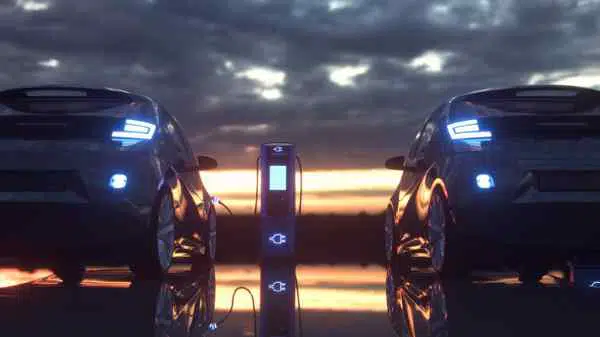
The US’s insane push for lithium-based power solutions is going to hit massive hurdles. Lithium is needed for the batteries in electric cars. The alkali metal is in short supply and the prices are going insane. That doesn’t even begin to address the cleanup from the mines and the dead batteries. Lithium expert Joe Lowry says Elon Musk is right, demand for the metal is rapidly outpacing supply.
What do the ideologues care if Americans don’t have cars? In fact, it’s what they want.
The Mining and Lithium expert, known as Mr. Lithium, agrees with Elon Musk that there’s not enough of the crucial metal to meet booming demand.
Bloomberg reports:
For over a year, a semiconductor shortage has battered the auto industry, creating supply strains and sending prices for both chips and cars soaring. Now, carmakers are preparing for another bottleneck: lithium, a key element in electric car batteries. Electric car sales are at an all-time high, with companies including Tesla, Volkswagen, and Mercedes all posting record shipments in the first three months of 2022.
But because of the surge in demand, experts are unsure whether enough lithium is available. “In the next two years, even though there will be significant growth in supply, it will be less than demand, so the gap will just continue to grow,” lithium and mining expert Joe Lowry, who has earned the nickname Mr. Lithium, recently said in an interview with Bloomberg.
Mr. Musk said we need more Lithium and it may force Tesla Inc. to make its own supply of the electric vehicle battery metal. That has fueled hopes by some that the billionaire entrepreneur will instead opt for a buyout of an established mining company, Newsmax reports.
“Price of lithium has gone to insane levels! Tesla might actually have to get into the mining & refining directly at scale unless costs improve,” the Tesla chief executive tweeted earlier this month. Lithium prices are up more than 80% this year and nickel prices have gyrated heavily amid trading turmoil in London.
Only a handful of countries mine Lithium.
OUR LEADERS BEHAVE STUPIDLY
It doesn’t matter. The Left must pursue its ideology. Man the torpedoes and full speed ahead.
Biden and the rest of the administration radically pursue EV cars over gas cars despite knowing of these shortages.
For example, Washington Governor Inslee is banning the sale of gas cars by 2030.
Oh, and cobalt is in short supply – we need that too. China controls the world’s cobalt.
Watch the administrators blather:
“We have the ability to see what can be, unburdened by what has been. And then to make the possible actually happen.”
Kamala Harris is possibly the world’s expert at saying so much, yet so little at the same time.
— Benny CNN+ Lifetime Member (@bennyjohnson) March 7, 2022
How much you want to bet Mayor Pete spends more time in a Suburban than a Tesla? https://t.co/BJ5MM4YWuC
— lavoixdelaraison 🇾🇪🇺🇸🇧🇪🇫🇷 (@voixdelawraison) March 7, 2022


Tesla said it best when they called it an Energy Storage System. That’s importat. So we can save the environment and get rid of fossil fuels by driving electric cars, right? Read this. SUBJECT: BATTERIES Tesla said it best when they called it an Energy Storage System. That’s important. They do not make electricity– they store electricity produced elsewhere, primarily… Read more »
Tesla said it best when they called it an Energy Storage System. That’s importat. So we can save the environment and get rid of fossil fuels by driving electric cars, right? Read this. SUBJECT: BATTERIES Tesla said it best when they called it an Energy Storage System. That’s important. They do not make electricity– they store electricity produced elsewhere, primarily… Read more »
Also, not enough charging stations, and the lithium and cobalt needed for these batteries are mined in China and Afghanistan. Also, what will be done with the batteries after their life status is used up. These aren’t bio=degradable.
Back to the future . . Horse and buggy
…and the REALLY stupid son-of-a-bitch, Joe Biden wants to make all of our military vehicles electric…including TANKS.
Never has a more stupid son-of-a-bitch occupied the White House.
…and he called Peter Doocy stupid!
Not enough lithium on Earth to convert every car to electric